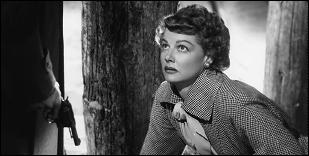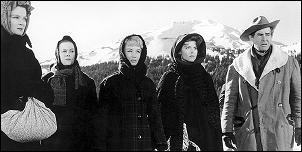Thu 12 Jan 2017
MARY McMULLEN – A Country Kind of Death. Doubleday Crime Club, hardcover, 1975. Jove, paperback reprint, April 1988.
I have a small prejudice against small children appearing in mystery novels. They’re either pests or small nuisances, or they’re victims. While children as victims is something we should read about — ignoring the .problem doesn’t make it go away — it’s not something I want to read about, if you see what I mean. Children (ideally) should be innocent and charming, and innocent and charming is not exactly what detective fiction is about.
For a while, I thought we might have an exception to this loose and sloppy rule. Kit is seven, her father writes mysteries for a living, and on page 3, Kit is described as having “read Philip’s most recent book, in manuscript, and had guessed by page 60 who the murderer was, which at the time had nettled her father considerably.”
But as good as that line is, the rest of Mary McMullen’s book shows that there is as much malice alive and well in the sweet-smelling country lanes as there is in the stench of any city’s streets. One could coin the phrase “Malice Domestic,” to describe this book, and it would fit perfectly.
Most of the life in the Keane household is a normal, everyday muddle, but when Kit’s mother Mag leaves for a short vacation, bringing her sister, Aunt Therese, in to keep things running while she’s gone, the muddle becomes nasty.
Don’t misunderstand. Therese is an innocent bystander. And it’s the neighbor lady, Mrs. Mint, who dies, drowned in the fishpond, and either Kit knows too much, or (could it be?) she’s the one who nudged her in.
This is not a detective story. Not really. There is a crime, a serious one, or maybe there isn’t one at all. She could have just fallen, you see. But don’t take the kindly prose of Mary McMullen too lightly. There’s viciousness hiding in the organdy, the wild geraniums, and the crisp-smelling sheets, and her characters are not always very nice…

